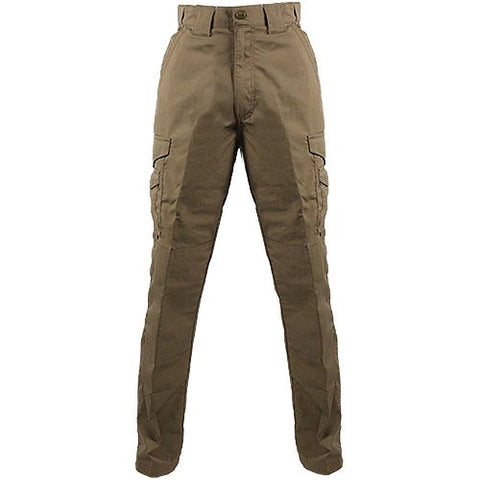
The Ultimate Guide To BDUs: Know Your Uniform

The Battle Dress Uniform, known more widely as the BDU, was worn by millions of U.S. military personnel while it was in active service as a combat uniform for the U.S. Army, U.S. Air Force, U.S. Navy and U.S. Marine Corps. The U.S. Coast Guard also wore it. It replaced the tired, but true, mono-colored uniforms that were well-known in the U.S. military for decades.
The History of the BDU Warfare in the 1800 and 1900s was much different than it is today. During the 1800s, opposing infantry would line up and face each other, firing directly at their enemy who was usually dressed in a uniform that included bright brass buttons and even blue jackets. In the early 1900s, the mindset of a battlefield uniform began to change along with warfighting tactics.
During World War I, the U.S. Army started using earth tones on their uniforms to help soldiers blend in with their surroundings and avoid snipers. Cover and concealment became part of the tactics taught to soldiers as they stepped onto the stage of the World War I.
The era of olive drab slowly came into existence in World War II and camouflage patterns were introduced into some U.S. Army and U.S. Marine Corps units. In the Pacific theater, some Marines were issued “frog” pattern coveralls and helmet covers. Similarly, in the European theater, airborne units used camouflage to help conceal themselves once they hit the ground.
While the value of camouflage was apparent to military planners, the science was still unrefined and as an every day uniform, camouflage uniforms or “cammies” didn’t really gain traction with the rank and file. Fatigues, as they were known, were tried and true. However, olive drab and brown did have value and those colors stuck with U.S. military ground forces for many years until Vietnam.
During the Vietnam War, the “tiger stripe” camouflage pattern was developed and became the uniform of choice by special operators in several branches. Post-Vietnam, the Cold War heated up and war on European battlefields seemed likely, so the services changed their focus from fighting in jungles, to fighting in Europe which had varying terrain features. Enter the M81 woodland pattern which was designed to conceal soldiers in the dense European foliage.
The M81 was thoroughly tested and retested and slowly it made its way with modifications into the ranks eventually becoming the four-colored BDU. It debuted in September 1981 in the U.S. Army. The BDU was printed using Near Infrared Signature Management Technology to prevent detection by infrared devices. The technology allowed the uniform wearers to blend in more with the surrounding terrain and avoid detection. But that kind of capability came with stipulations and limits.
Naturally, in the spit and polish world of the garrison military, those limits didn’t go over well with military leaders obsessed with “military image” and looking sharp. Starched, ironed or dry cleaned BDUs were ineffective in the field. The infrared coating on the BDU was rendered useless when a BDU was ironed or starched. The workaround, for most in the barracks, became to own one set of inspection BDUs and multiple sets for the field and everyday use.

U.S. Army BDU In 1981, the U.S. Army began issuing the BDU to its troops replacing the OG-107 uniforms which had been a part of the Army for decades. Along with the new uniform trousers and blouse, soldiers were issued brown t-shirts and a black web belt with a brass black buckle. Leather boots remained, although a lucky few were issued jungle boots. Since its first issue, the BDU has had numerous updates and improvements to make the uniform more user friendly. For example, earlier versions of the BDU included waist adjustment tabs which were obstructive when wearing a web belt. Eventually, those tabs were discontinued.
The BDU was initially only issued in a NyCo blend (50 percent nylon/50 percent cotton), but personnel serving in hot weather environments led the charge for the creation of the cotton Hot Weather BDU in 1983 as well as the first sets of ripstop which made the uniforms lighter, more breathable and more durable. For those who operated in places like Panama, Korea or the Philippines, they were a welcomed upgrade.
By 1989, the Army had successfully issued the BDU to all of its soldiers and the green olive drab uniforms became a part of history.
During the 1980s, the Army developed a six-color, desert uniform, nicknamed the “chocolate chip” BDU and that would be issued to those deploying to Southwest Asia for Operation Desert Shield/Storm in the 1990s. Those too would eventually find their way into the history books and newer, updated desert uniforms would start being issued in the aftermath of Somalia.
The Army issued the BDU from 1981 to 2008.
U.S. Marine Corps BDU In 1977, the Army’s Engineer Research and Development Lab BDU pattern was introduced to the U.S. Marine Corps, but it was not issued until 1981 and the battle uniform the Corps had worn since the 1950s was phased out. Initially, nametapes were not worn with the Marine Corps BDU, but in 1991 Marines began wearing nametapes on their BDUs in order to comply with North Atlantic Treaty Organization policies.
What separated BDUs worn by the Marine Corps from other branches of service was the Eagle, Globe and Anchor (EGA) that was ironed on the left chest pocket of the uniform. Earlier Marine Corps BDUs featured “USMC” below the EGA, but that was discontinued. Upon completion of recruit training, recruits were given the privilege to iron on the EGA onto their BDUs. This rite of passage represented that the recruits had earned the right to be called U.S. Marines.
The Marine Corps issued the BDU from 1981 to 2005. It was the first branch of service to move away from the BDU and research and implement uniform camouflage patterns more specific to the Marine Corps mission. U.S. Air Force BDU Given the lack of combat ground forces, the U.S. Air Force didn’t have a mass need for BDUs like the Army and Marine Corps. With a relatively small group of personnel in the pararescue, combat controller, weather operator, and security police (now security forces) career fields, the Air Force was selective in its issuance of the BDU.
Nonetheless, as early as 1981, select Air Force units began to use the BDU and by 1987, the service began to issue the BDU to all its members. In 1988 it was the standard duty uniform across the U.S. Air Force.
The BDU was issued in the Air Force from 1981-2011. U.S. Navy BDU Hard to believe, but the U.S. Navy started issuing the BDU in 1981 along with other branches. It seems to make little sense given there is no woodland terrain to blend into on ships, but the uniforms saw limited issue to land-based and special purpose units mostly.
The Navy and its cousin, the U.S. Coast Guard, issued the BDU from 1981-2012, surprisingly one of the longest issue periods of all branches.
BDU Today The BDU is no longer in service and there are entire generations of U.S. warfighters who have never worn it or even know what it is. Each branch has moved on from the BDU and each now has their own version of a combat uniform. However, the BDU left its indelible mark on current military combat uniforms. Many of the positive features included in the design of the current combat uniforms come from some of the not-so-popular features of the BDU.
For example, the current Air Force combat uniform enables airmen to easily remove patches and name and service tapes since they are not sewn on. Boots don’t have to be polished which saves valuable time.

And the BDU lives on in the civilian world. Like other useful products created out of military need, the BDU has transitioned to many paramilitary professions like law enforcement, security and paramedicine. These professionals wear BDU-like uniforms because of their durability and utility. They might not be camouflaged, and many are maybe black, blue or brown, but the many pockets and reinforced areas at the joints prove valuable in many agile professions.
Veteran organizations and junior military organizations have found the BDU useful in their organizations as have outdoorsmen and sportsmen alike. What civilians are now learning is that the BDU is a more than suitable garment that withstands the rigors of many activities.
It might be gone from the ranks, but the BDU isn’t fading into history.
Link nội dung: https://trungtamgiasuhanoi.edu.vn/bdu-cnsh-a6803.html